NATIONAL MUSEUM OF AMERICAN HISTORY
What Does ‘Girl Power’ Really Mean?
We asked our visitors to talk back about what it means to be a girl
![Three cards where visitors left handwritten messages invoking girl power. One card reads: “you think we're not good enough but we're just to [sic] good for you, girl power.”](https://th-thumbnailer.cdn-si-edu.com/wWxQ5SM6FWDkpT6Y5MV3Gt4XJhs=/1000x750/filters:no_upscale():focal(800x503:801x504)/https://tf-cmsv2-smithsonianmag-media.s3.amazonaws.com/filer_public/33/4c/334cc9d0-364c-44b5-9172-b803cb3bba3b/gp_collage_a.png)
What does “girl power” mean to you? Since its debut in American pop culture 30 years ago, girl power has remained an iconic political slogan. When you hear it, you may think of the snarling punk songs of the Riot Grrrl movement, characters like Wonder Woman, or Spice Girls merchandise from the 1990s decorated with the phrase. The ripples of its popularity can be seen in the exhibition Girlhood (It’s complicated), which opened in 2020 at the National Museum of American History as an exploration of the history of gender roles and the idea of girlhood in the United States.
The team behind Girlhood prioritized using girls’ voices from the past to create the exhibition and invited visitors to contribute their own voices through a talkback card station. Over the last two years, thousands of visitors from around the world have answered the questions printed on the cards to share their opinions on everything from fashion trends to court cases. While working as an intern at the museum for the past year, I have collected and digitized Girlhood’s talkback cards each week so they can be archived. One phrase in particular has stood out to me: “girl power!” While the many other slogans used in the cards usually stand alone, girl power is often accompanied by visitors’ explanations of what the phrase means to them.
The foundations of girl power can be traced to the 1950s, when girlhood became a more important and defined cultural category in the wake of World War II. Advertisers capitalizing on the baby boom began marketing to girls as a distinct group with its own unique needs and interests. Despite girls’ growing consumer power and influence on pop culture, girlhood was still rarely taken as seriously as boyhood. Commercials, magazines, music, television shows, and movies often depicted boyhood as a period of adventure, rebellion, and independence, and girlhood as a state of frivolity, dependence, and unimportance.
The phrase "girl power" became popular in the 1990s, when girls who had grown up with the negative post-baby-boom messaging became adults with their own ideas about girlhood. Girl power emerged from the Riot Grrrl movement, an underground feminist punk effort that advocated for “revolution girl style now!” Feminists like Kathleen Hanna, the lead singer of Bikini Kill, rejected the notion that girlhood was embarrassing and trivial and worked to reclaim it as a source of social and political power. After being adopted as a catchphrase by the British pop band the Spice Girls in the late 1990s, “girl power” cemented its place in the mainstream and became an accessible (and marketable) cross-generational political slogan.
Girl power’s impact is evident in its hundreds of appearances in the thousands of cards that have been submitted to the exhibition. The messages shared showcase some of the many ways visitors have defined girl power and used the phrase to explore their own complicated experiences with and understandings of girlhood.
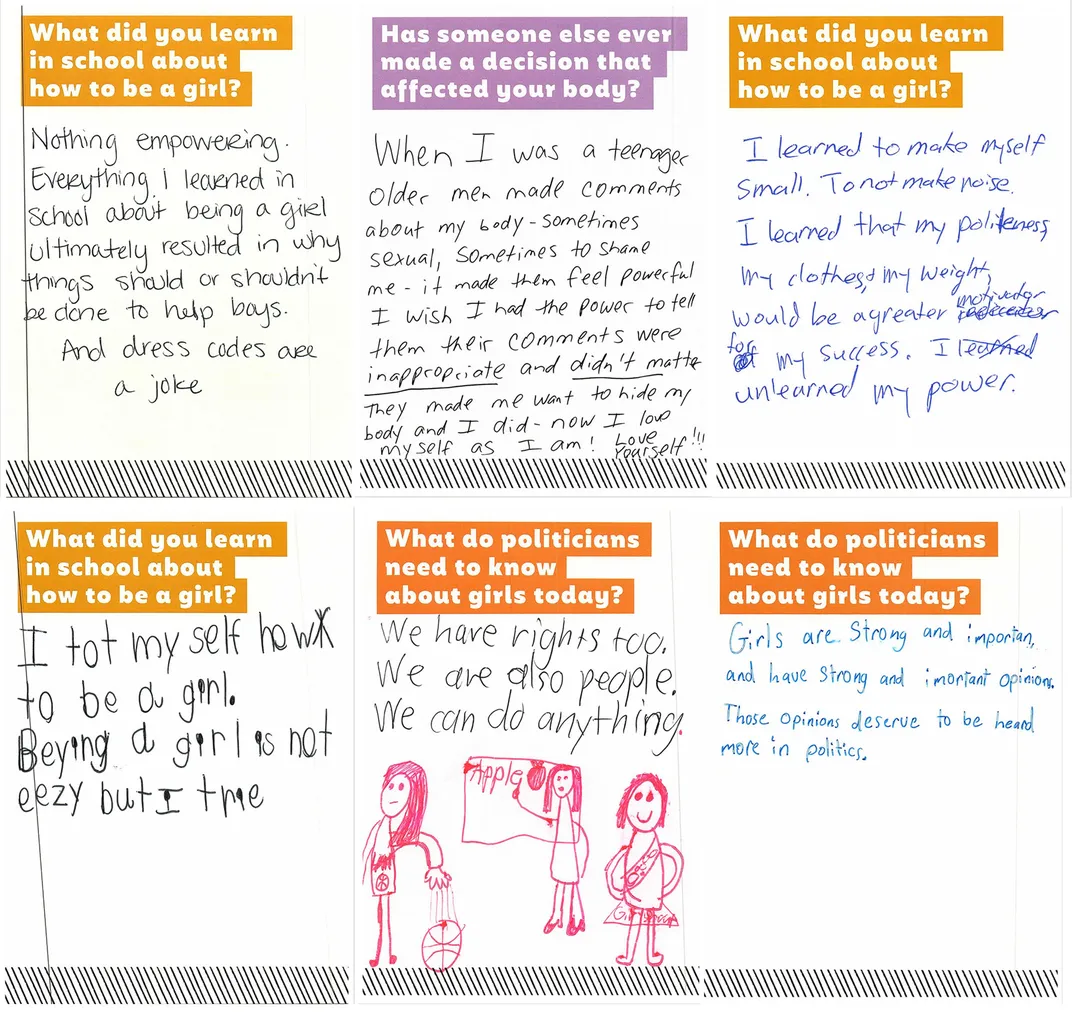
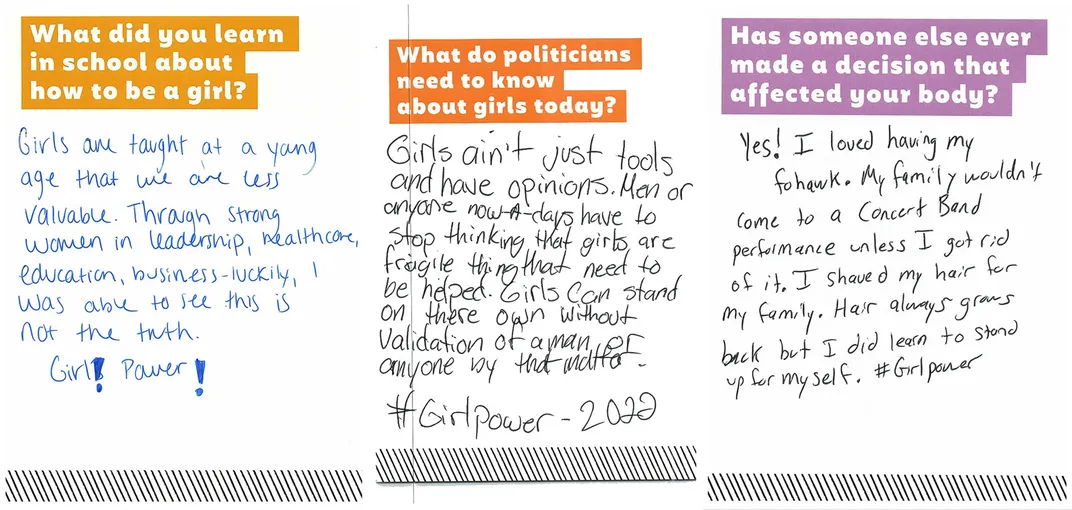
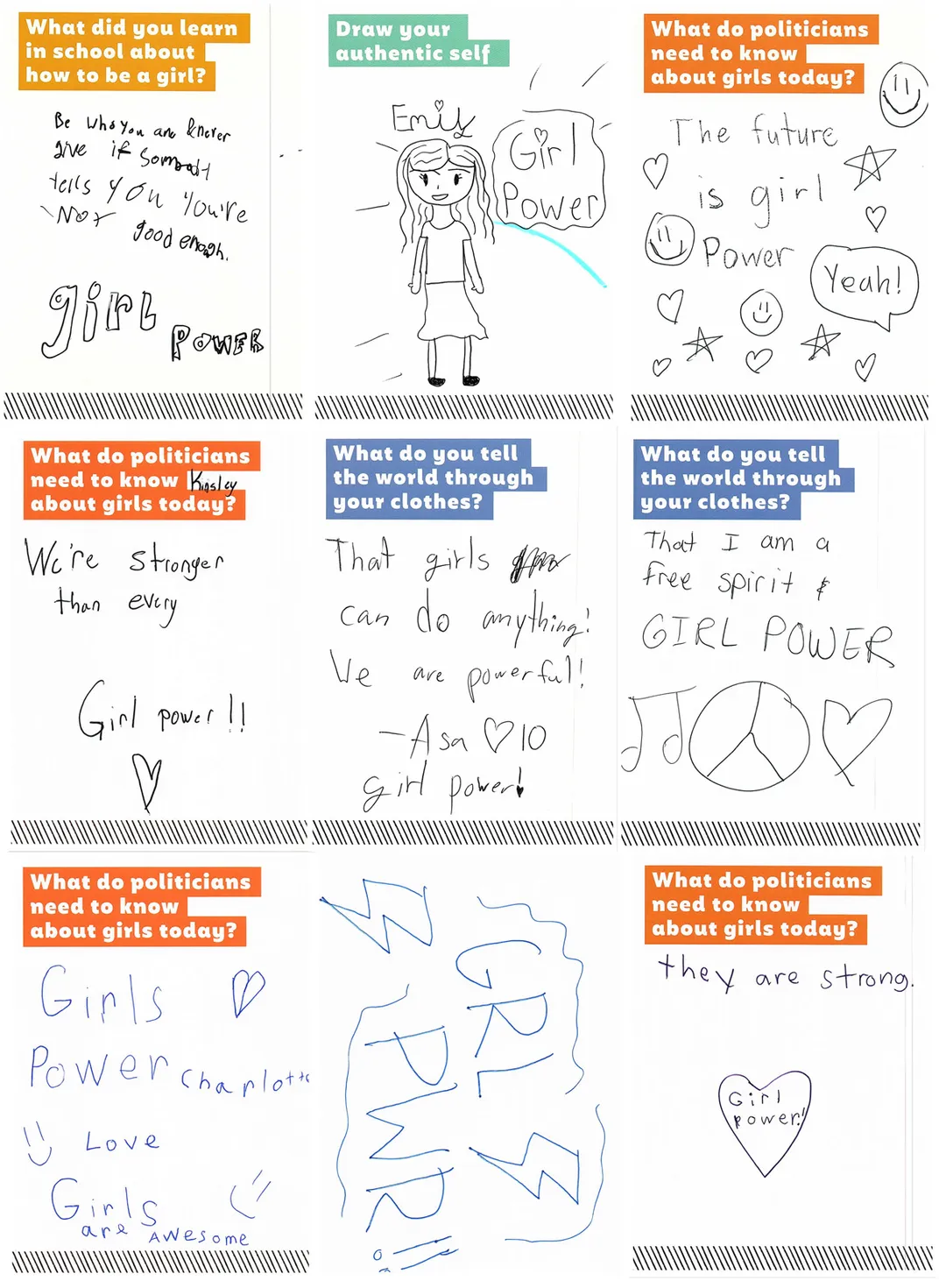
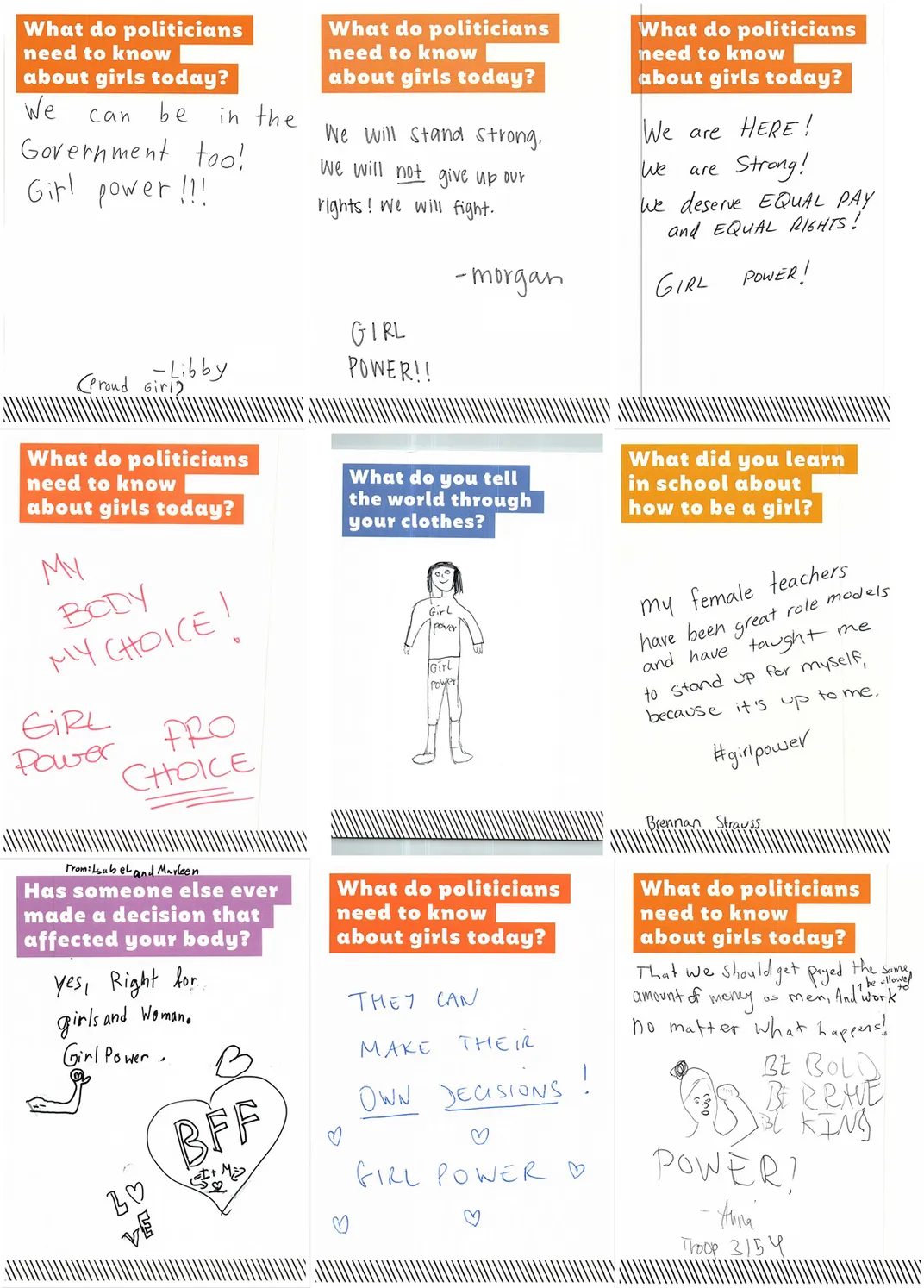
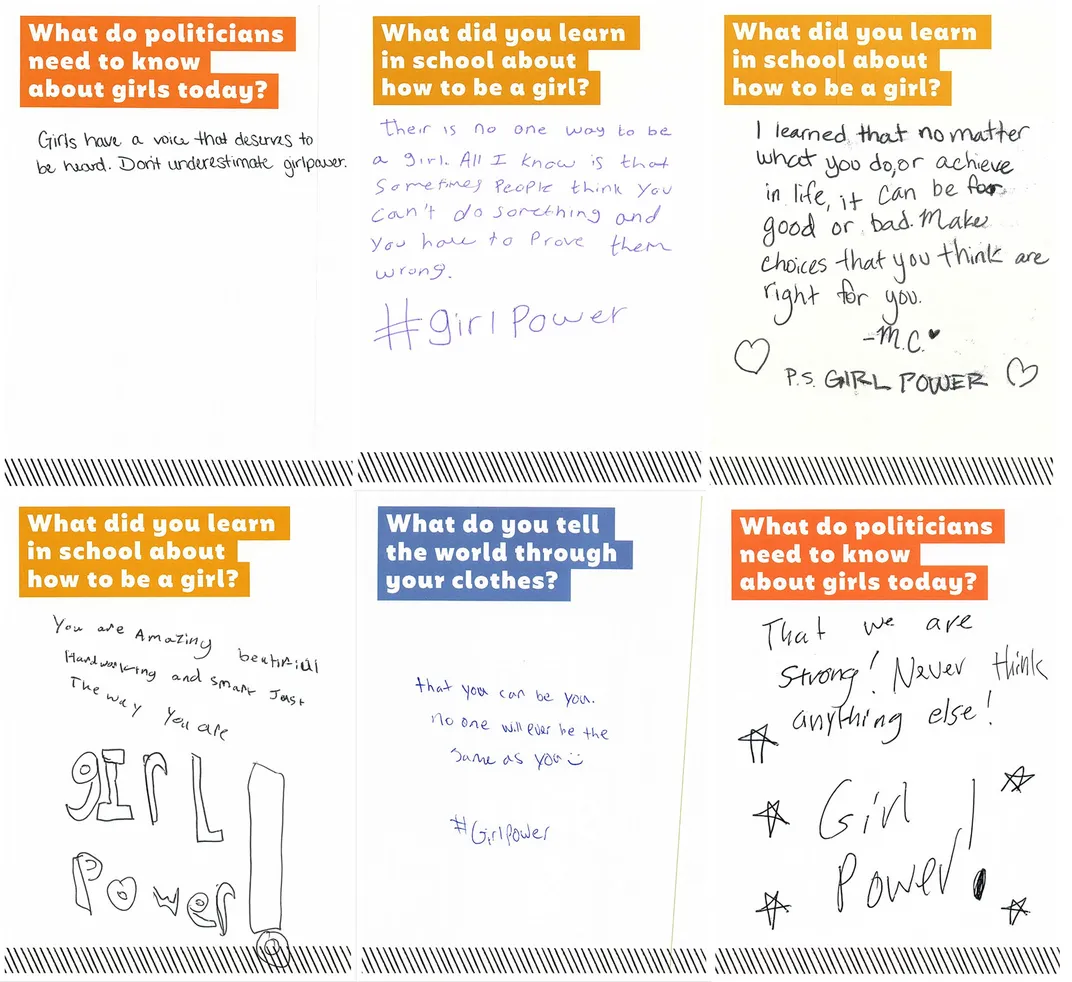
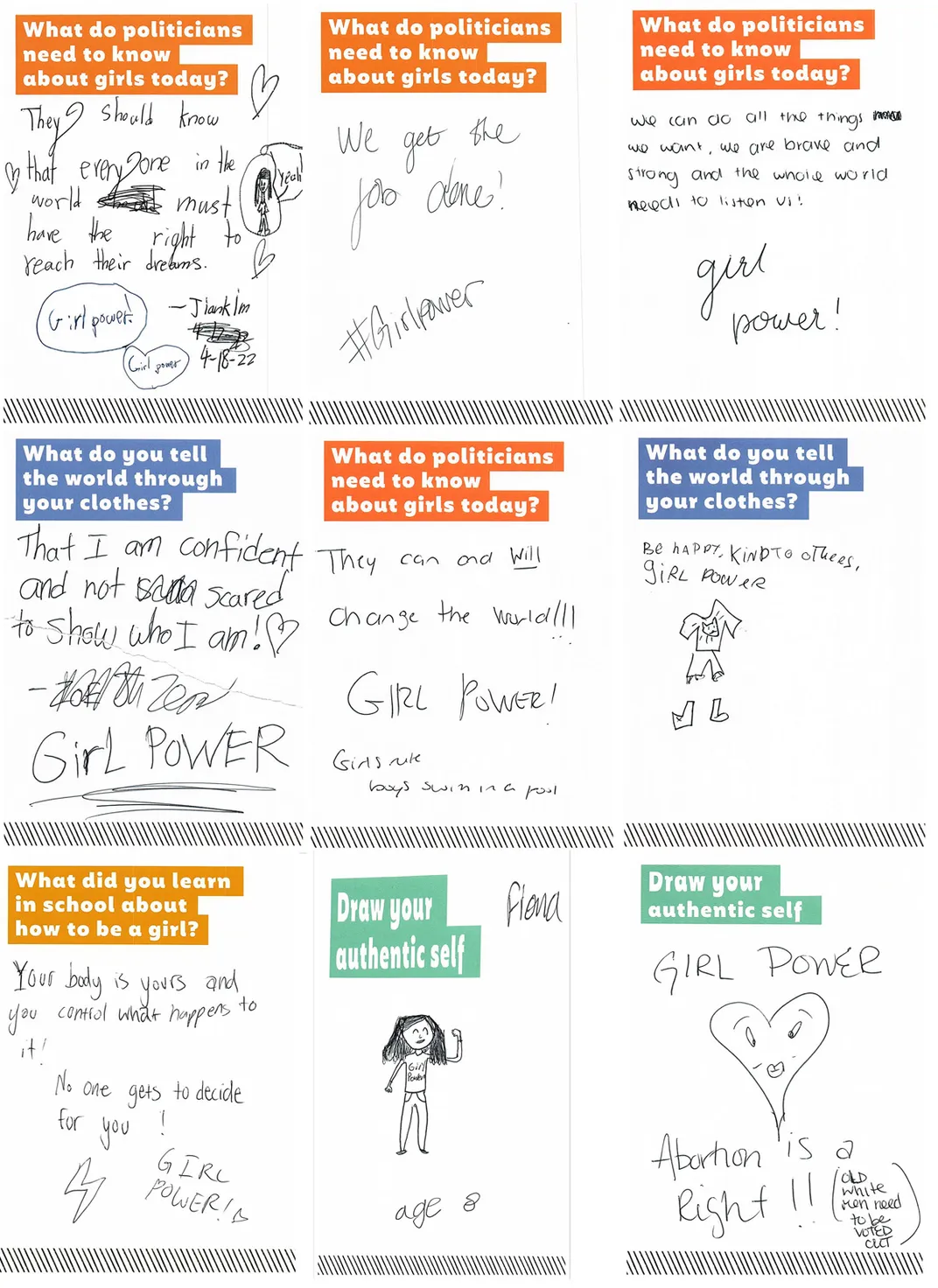
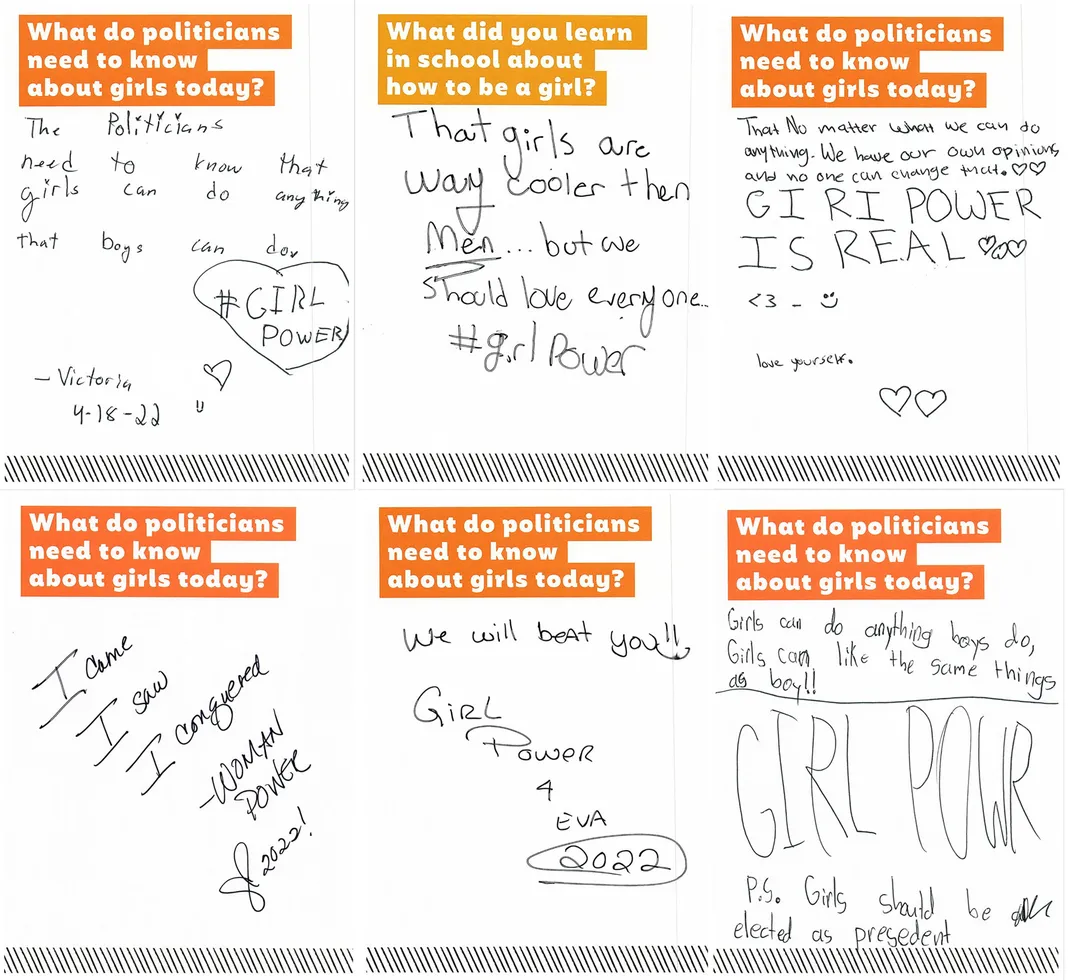
While girl power has been criticized by some feminists as being too ambiguous, it’s clear from looking at visitors’ talkback cards that the phrase’s enduring popularity is perhaps owed to its deceptive simplicity. The wide interpretive space of girl power acts as an invitation, encouraging girls to define what girlhood and power mean to them and challenging people of all ages to reconsider their own ideas and assumptions. The variety of ways visitors interpret the phrase demonstrates how “girl power” is an accessible introduction to political consciousness, something girls have been denied, and a source of inspiration and self-advocacy that many carry into adulthood. “Girl power,” like girlhood, is complicated!
Girlhood (It’s complicated) received support from the Smithsonian American Women’s History Initiative. The last day to see the exhibition at NMAH is January 2, 2023, before it begins its national tour.
This post was originally published on the National Museum of American History's blog on October 7, 2022. Read the original version here.
